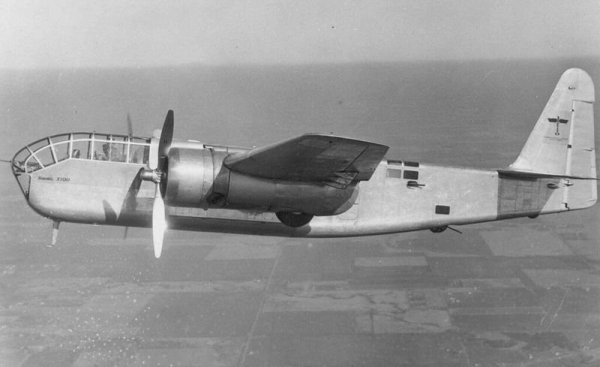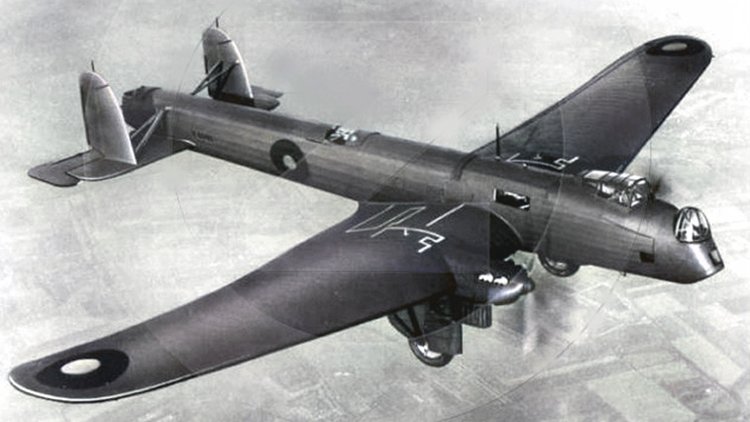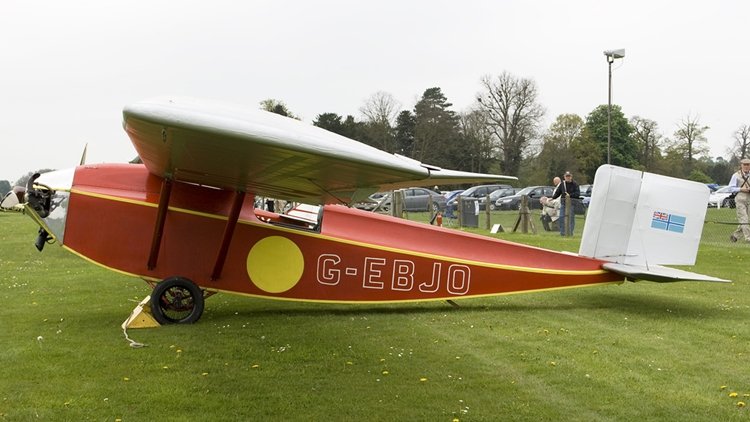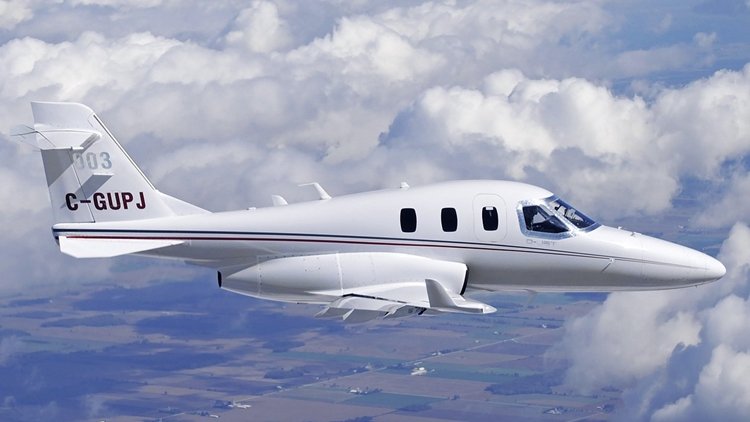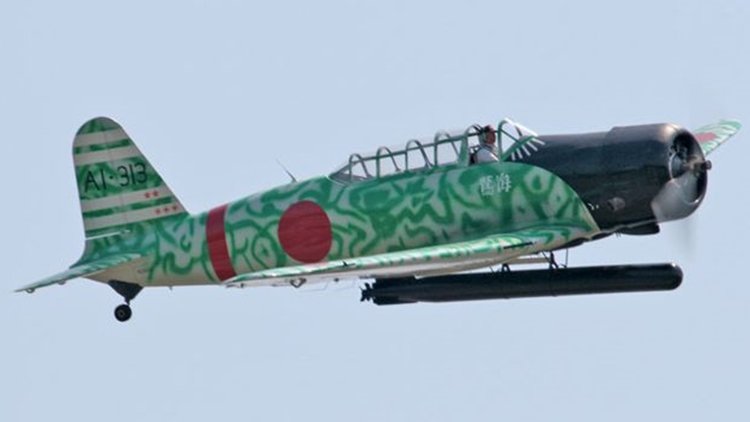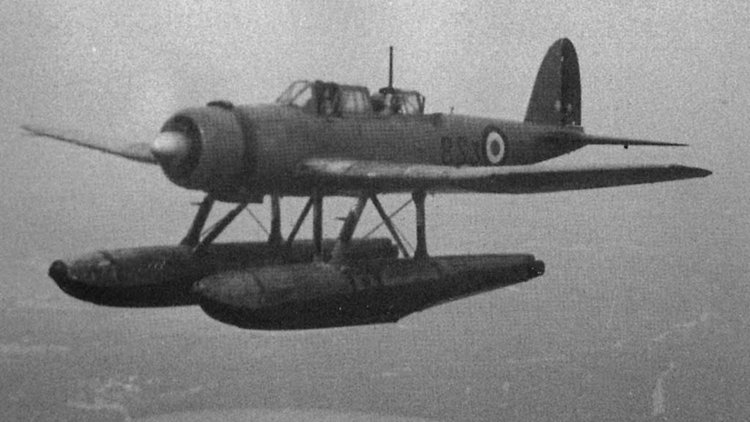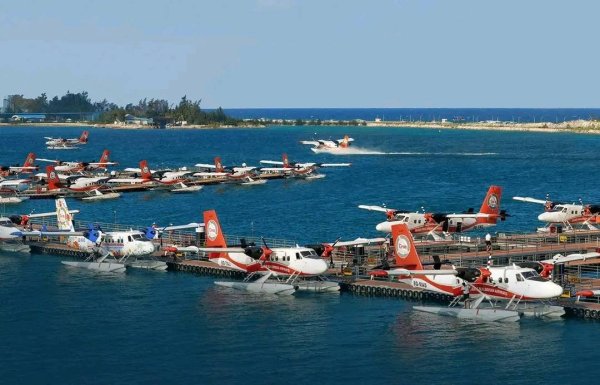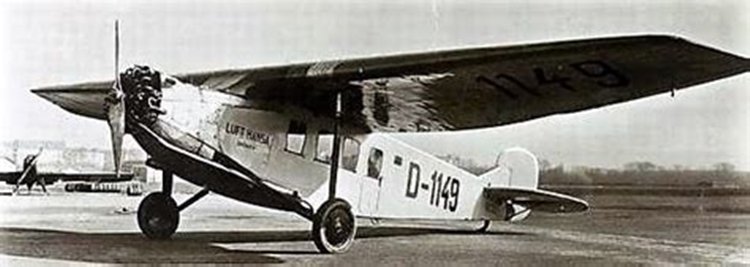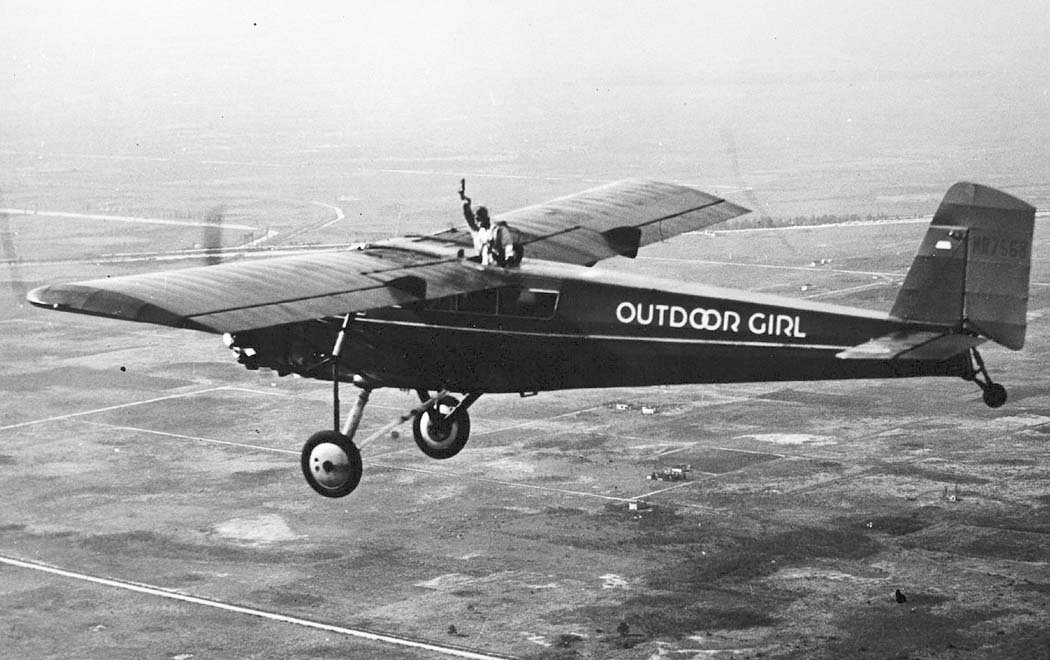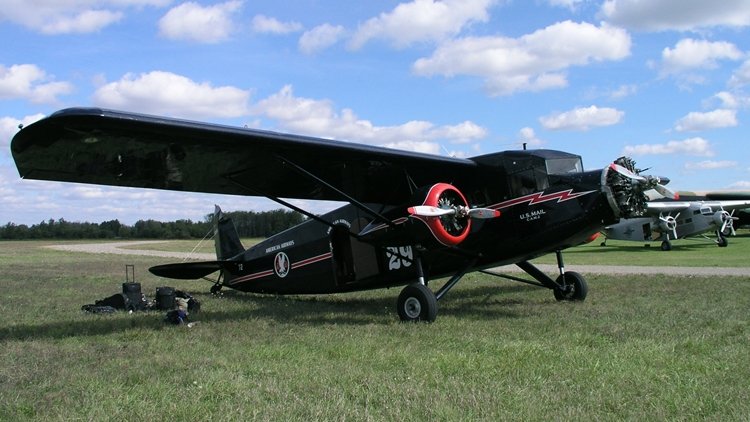-
Posts
7,582 -
Joined
-
Last visited
-
Days Won
67
Content Type
Profiles
Forums
Gallery
Downloads
Blogs
Events
Store
Aircraft
Resources
Tutorials
Articles
Classifieds
Movies
Books
Community Map
Quizzes
Videos Directory
Everything posted by red750
-
A wheel fell off a United Airlines Boeing 777 just after takeoff. https://www.msn.com/en-au/news/australia/terrifying-moment-wheel-falls-of-united-airplane-taking-off-from-san-francisco-airport-and-crushes-cars-parked-below/ar-BB1jw3aB
-
The Stearman XA-21 (Model X-100) was a competitor in a United States Army Air Corps competition for a twin-engined attack aircraft which (after redesigns) led to the Douglas A-20 Havoc, Martin A-22 Maryland and North American B-25 Mitchell. The X-100, designated XA-21 following purchase by the Army Air Corps, was a twin-engined high-winged monoplane of all-metal construction. Its initial design featured an unusual "stepless cockpit" arrangement, much like those on most German World War II bombers designed during the war years from the He 111P onwards, with a streamlined, well-framed greenhouse canopy enclosing both the pilot and bombardier stations. The XA-21 was first tested with the streamlined cockpit but this configuration was found to restrict the pilot's forward vision, and the aircraft was rebuilt with a conventional (stepped) nose and cockpit structure. Although this change in the cockpit did not significantly affect performance, the XA-21 was not ordered into production.' The sole XA-21 had serial number 40-191.
-
Reads like Boehm designed Miller. Ha ha. Not my error, copy and paste. Wikipedia strikes again.
-
The Fairey Hendon was a British monoplane, heavy bomber of the Royal Air Force, designed by Fairey Aviation in the late 1920s. The aircraft served in small numbers with one squadron of the RAF between 1936 and 1939. It was the first all-metal construction low-wing monoplane to enter service with the RAF. The Hendon was built to meet the Air Ministry Specification B.19/27 for a twin-engine night bomber to replace the Vickers Virginia, competing against the Handley Page Heyford and Vickers Type 150. The specification required a range of 920 mi (1,480 km) at a speed of 115 mph (185 km/h), with a bomb load of 1,500 lb (680 kg). To meet this requirement, Fairey designed a low-winged cantilever monoplane with a fixed tailwheel undercarriage. The fuselage had a steel tube structure with fabric covering with a pilot, a radio operator/navigator and three gunners, in open nose, dorsal and tail positions. Bombs were carried in ten large and six smaller bomb cells in the fuselage and wing centre section between the engines. Variants powered by either radial engines or liquid-cooled V12 engines were proposed. The prototype K1695 (which was known as the Fairey Night Bomber until 1934) first flew on 25 November 1930, from Fairey's Great West Aerodrome in Heathrow and was powered by two 460 hp (340 kW) Bristol Jupiter VIII radial engines. The prototype crashed and was severely damaged in March 1931 and was rebuilt with two Rolls-Royce Kestrel VI engines. After trials, 14 production examples named the Hendon Mk.II were ordered. These were built by Fairey's Stockport factory in late 1936 and early 1937 and flown from Barton Aerodrome, Manchester. Orders for a further sixty Hendons were cancelled in 1936, as the prototype of the first of the next generation of British heavy bombers—the Armstrong Whitworth Whitley—had flown and showed much higher performance. The Hendon Mk.II was powered by two Rolls-Royce Kestrel VI engines. The production Hendon Mk.II included an enclosed cockpit for the pilot and navigator. The type was delayed by the crash and a rebuild of the prototype and the Heyford received the majority of the orders to replace RAF heavy bombers, the Hendon coming into service three years later. The only Hendon-equipped unit, 38 Squadron, began operational service at RAF Mildenhall in November 1936, replacing Heyfords, later moving to RAF Marham, Norfolk. Later, the Hendons went to 115 Squadron, which was formed from 38 Squadron. The type was soon obsolete and replaced from late 1938 by the Vickers Wellington. By January 1939, the Hendons had been retired and were then used for ground instruction work, including the radio school at RAF Cranwell. Variants Hendon Mk.I Prototype, one built Hendon Mk.II Production variant with two Rolls-Royce Kestrel VI engines, 14 built
-
The Sukhoi Su-24 (NATO reporting name: Fencer) is a supersonic, all-weather tactical bomber developed in the Soviet Union. The aircraft has a variable-sweep wing, twin engines and a side-by-side seating arrangement for its crew of two. It was the first of the USSR's aircraft to carry an integrated digital navigation/attack system. The Su-24 started development in the early 1960s and entered full production in 1967. Production ceased in 1993. It remains in service with the Russian Aerospace Forces, Syrian Air Force, Ukrainian Air Force, Algerian Air Force and various other air forces to which it was exported. The Su-24 has a shoulder-mounted variable geometry wing outboard of a relatively small fixed wing glove, swept at 69°. The wing has four sweep settings: 16° for takeoff and landing, 35° and 45° for cruise at different altitudes, and 69° for minimum aspect ratio and wing area in low-level dashes. The variable geometry wing provides excellent STOL performance, allowing a landing speed of 230 kilometers per hour (140 mph), even lower than the Sukhoi Su-17 despite substantially greater takeoff weight. Its high wing loading provides a stable low-level ride and minimal gust response. The Su-24 has two Saturn/Lyulka AL-21F-3A afterburning turbojet engines with 109.8 kN (24,700 lbf) thrust each, fed with air from two rectangular side-mounted intakes with splitter plates/boundary-layer diverters. In early Su-24 ("Fencer A" according to NATO) aircraft these intakes had variable ramps, allowing a maximum speed of 2,320 kilometers per hour (1,440 mph), Mach 2.18, at altitude and a ceiling of 17,500 meters (57,400 ft). Because the Su-24 is used almost exclusively for low-level missions, the actuators for the variable intakes were removed to reduce weight and maintenance. This has no effect on low-level performance, but absolute maximum speed and altitude are cut to Mach 1.35 and 11,000 meters (36,000 ft). The earliest Su-24 had a box-like rear fuselage, which was soon changed in production to a rear exhaust shroud more closely shaped around the engines to reduce drag. The revised aircraft also gained three side-by-side antenna fairings in the nose, a repositioned braking chute, and a new ram-air inlet at the base of the tail fin. The revised aircraft were dubbed "Fencer-B" by NATO, but did not merit a new Soviet designation. For more details, including operational history and variants, click here.
-
The ANEC I and ANEC II were 1920s British single-engine ultralight aircraft designed and built by Air Navigation and Engineering Company Limited at Addlestone Surrey. One was privately constructed in Brisbane, Australia. The ANEC I and II, designed by W.S Shackleton, were amongst the earliest ultralight aircraft; they were very small, wooden, strut braced high-wing monoplanes. The first ANEC I, registered G-EBHR, first flew at Brooklands on 21 August 1923. It was the first aircraft with an inverted engine, a 696 cc Blackburne Tomtit, to fly in the United Kingdom. The ANEC I was designed to the rules of the 1923 Lympne light aircraft trials, principally an engine capacity limit of 750 cc, and the two aircraft completed that August took part. The main prizes were for fuel economy and the second ANEC I G-EBIL, flown by Jimmy James, shared half of the £1,500 prize with an English Electric Wren for flights of 87.5 miles (141 km) on one gallon (4.54 L) of petrol. He later reached an altitude of 14,000 ft (4,267 m) in it. G-EBIL was evaluated by the Air Ministry in 1924, briefly carrying the RAF serial J7506.[3] Afterwards it was modified with a wingspan greatly reduced from 32 ft to 18 ft 4 in (9.75 m to 5.59 m) and re-engined with a 1,000 cc Anzani engine for entry in the 1925 Lympne August Bank Holiday Races, designated the ANEC IA. Only one more ANEC I was constructed. It was built in Australia by George Beohm, who went on to design the Genairco Biplane, and Horrie Miller. E. W. Beckman, the owner of the aircraft, intended to enter it in the Low-Powered Aeroplane Competition held at Richmond in December 1924, but it was not completed until the following year. The first of the two built in the United Kingdom in 1923, G-EBHR, was exported to Australia in the second half of 1924. The ANEC II was an enlarged version of the ANEC I built for the 1924 Lympne light aircraft trials competition. Following the revised competition rules, it was a two-seater and its more powerful 1,100 cc Anzani inverted V twin-cylinder had the greatest capacity allowed. The wing area was increased by 28% to accommodate the extra weight by a 5 ft 2 in (1.57 m) span extension. It was also longer by almost the same amount. Engine problems kept it from flying in the competition and out of the Grosvenor Trophy race that immediately followed. In 1927 a new owner refitted it with a 32 hp (24 kW) Bristol Cherub III flat twin engine, a larger rudder, and a more conventional undercarriage with larger wheels mounted on a cross axle attached to the lower fuselage with a pair of V-struts. In 1931 another new owner fitted a heavier 30 hp (22 kW) ABC Scorpion engine, another flat twin and, to keep the weight down, reworked it as a single seater. It was in this condition when it was acquired by Richard Shuttleworth in about 1937. Variants ANEC I – three built (Specifications below) ANEC IA – ANEC I with reduced wingspan, one modified. ANEC II – two-seat version, one built.
-
I watched an episode of the American TV show Last Week Toight with John Oliver, which piled heaps of shit on a number of subjects, with the biggest heap saved for Boeing. The full episode is on Youtube at this address. It's worth watching to hear the comments of quite a few Boeing employees. Seven out of ten said they woould not fly on the Dreamliner. One said he would but had a death wish.
-
The Lockheed EC-121 Warning Star was an American airborne early warning and control radar surveillance aircraft operational in the 1950s in both the United States Navy (USN) and United States Air Force (USAF). The military version of the Lockheed L-1049 Super Constellation was used to serve as an airborne early warning system to supplement the Distant Early Warning Line, using two large radomes (a vertical dome above and a horizontal one below the fuselage). It replaced the TBM-3W used by the USN. Some EC-121s were also used for signal intelligence gathering. The EC-121 was introduced in 1954 and phased out in 1978, although a single specially modified EW aircraft remained in USN service until 1982. The USN versions when initially procured were designated WV-1 (PO-1W), WV-2, and WV-3. The USAF Warning Stars served during the Vietnam War both as electronic sensor monitors and as a forerunner to the Boeing E-3 Sentry AWACS. USAF aircrews adopted its civil nickname, "Connie" (diminutive of Constellation) as reference, USN aircrews used the nickname "Willie Victor". For details of development, operational history and variants, click here.
-

Bankstown Airport - Is it all Doom and Gloom?
red750 replied to Ben's topic in AUS/NZ General Discussion
re my post on 27 Oct 23, I repeated the visit to both Lilydale and Coldsteam today, as it was Saturday and I thought there might e a bit more activity. At Lilydale, a helicopter approached as I was nearing the airport, and when I arrived, it was refuelling. Left shortly after. There were a few people around the skydiving hanger, but nobody but the female receptionist at the flying school. A Beech 36 and a Warrior taxied out and took off, and the Skydive Cessna Caravan refuelled and taxied back to the hhangar. No other activity while I as there. Next I went to Coldstream where there were four aircraft parked, two near the flying school, and two more down the other end of the field. Mine was the only car at the airfield. Someone came out of the flying school and started one of the aircraft, a Tecnam. He taxied down and circled the two aircraft at the other end of the fileld then back to the school. He cut the engine and rolled about ten metres with the engine dead. It rolled to a stop and he hopped out and went back into the school building. Another uninspiring day. -
The Diamond D-JET is a composite, five-seat, single-engine very light jet developed by Austrian aircraft manufacturer Diamond Aircraft Industries. The intended cost for the aircraft was advertised by the company as being US$1.89 million dollars in March 2009. Development of the D-JET has been disrupted by funding shortfalls during the Great Recession. By February 2013, the development program had been suspended pending company reorganization, which included the workforce related to the D-JET being laid off. During May 2014, Diamond confirmed the continued suspension of the programme, but stated that it had not been cancelled. During December 2016, a majority share of Diamond Aircraft Canada was sold to Chinese firm Wanfeng Aviation; reportedly, this shall result in a detailed re-assessment of the D-JET program, including options for the potential resumption of its development. The Diamond D-JET is a very light jet aircraft, seating up to five personnel and powered by a single engine. A key attribute of the design was its high level of stability during flight, which was reportedly present through its full envelope even during challenging manoeuvres. As a result of its clean exterior design, the D-JET possesses relatively low drag, enabling the aircraft to glide in excess of 65 miles from its 25,000-foot ceiling altitude. The cabin of the D-JET was intended to feature various design elements to enhance onboard comfort, such as the proposed seating layout and the low vibration levels present during flight, for both passengers and crew. The center cockpit pedestal is cantilevered to ease entrance and egress in comparison to some competitors. Separated baggage compartments are located within the interior of the aircraft's nose and to the aft of the main cabin, both of which being externally accessed. The D-JET is powered by a single Williams FJ33-4A turbofan engine, which is equipped with an electronically controlled full-authority digital engine control (FADEC) system. Various functions, such as engine startup and over-speed selection prevention, have been automated and are seamlessly performed by the FADEC system. For redundancy, the dual-channel FADEC system uses four independent electrical power sources in addition to battery backup. Diamond opted to adopt a centerline location for the engine, air for which is fed through inlets embedded into the wing roots. The central location of the engine places makes it close to the center of gravity of the D-JET, reducing pitch forces, however, there are some drawbacks to this approach, including elevated air losses within the ducting arrangement used and a greater likelihood of foreign object ingestion. According to aviation publication Flying Magazine, the controls of D-Jet "feel completely natural...stability is excellent, and I found the workload to be very low". Akin to most jet aircraft, possessing a wide range between minimum and maximum airspeeds, the D-Jet has a larger pitch trim range than a piston-engined counterpart, thus use of the trim control through the takeoff and landing procedures is necessitated to a greater degree than propeller-driven aircraft. The D-Jet is outfitted with relatively large slotted flaps, which were reportedly crucial to achieve the 61-knot maximum stall speed certification required by any single-engine aircraft. These flaps, which resulted in no meaningful pitch changes during retraction or extension, were designed to ease their usage. The avionics of the D-JET comprise a Garmin G1000 glass cockpit, the large multi-function display of which taking center-place on the cockpit dashboard, akin to aircraft such as the Citation Mustang. For de-icing purposes, Diamond opted for pneumatic boots on the wing's leading edges, bleed air for heating the inlets and ducts, and electric heating for the windshields and probes; in particular, Goodrich developed a considerably thinner de-icing system for the D-JET. The landing gear is electrically-actuated on later-built prototypes; atypically, the landing gear is designed to be used as an air brake during landing approaches, being deployable at speeds as high as 200 knots. Maneuvering on the ground was achieved via a nosewheel steering system, actuated via a mechanical linkage to the pedals. According to Diamond, the D-JET could be operated from 3,000-foot runways, assuming that they are both dry and uncontaminated. For details of development, click here.
-
That info as copied direct from the manufacturer's website. https://www.flypyka.com/pelican-cargo
-
The Nakajima B6N Tenzan (Japanese: 中島 B6N 天山, "Heavenly Mountain", Allied reporting name: "Jill") was the Imperial Japanese Navy's standard carrier-borne torpedo bomber during the final years of World War II and the successor to the B5N "Kate". Due to its protracted development, a shortage of experienced pilots and the United States Navy's achievement of air superiority by the time of its introduction, the B6N was never able to fully demonstrate its combat potential. The B5N carrier torpedo-bomber's weaknesses had shown themselves early in the Second Sino-Japanese War and, as well as updating that aircraft, the Imperial Japanese Navy began seeking a faster longer-ranged replacement. In December 1939 it issued a specification to Nakajima for a Navy Experimental 14-Shi Carrier Attack Aircraft capable of carrying the same external weapons load as the B5N. The new plane was to carry a crew of three (pilot, navigator/bombardier and radio operator/gunner) and be of low wing, cantilevered, all-metal construction (though control surfaces were fabric-covered). Further requirements included a top speed of 250 knots (460 km/h; 290 mph), a cruising speed of 200 knots (370 km/h; 230 mph) and a range of 1,000 nmi (1,900 km; 1,200 mi) with an 800 kg (1,800 lb) bomb load or 2,072 nmi (3,837 km; 2,384 mi) without external armament. The Navy had requested installation of the proven Mitsubishi Kasei engine as the B6N's powerplant but Engineer Kenichi Matsumara insisted on using Nakajima's new 1,870 hp (1,390 kW) Mamoru 11 14-cylinder air-cooled radial due to its lower fuel consumption and greater adaptability. This became an unfortunate choice as the Mamoru engine was plagued with mechanical defects and never achieved its expected power rating. Constrained by the standard-sized aircraft elevators then in use on most Japanese carriers, designer Matsumara was obliged to use a wing similar in span and area as that of the B5N and to limit the aircraft's overall length to 11 m (36 ft). This latter restriction accounted for the B6N's distinctive swept-forward tail fin and rudder. The outer wing panels folded upward hydraulically, reducing the B6N's overall span from 14.9 m (49 ft) to approximately 6.3 m (21 ft) for minimal carrier stowage. In order to lessen increased wingloading due to the heavier powerplant, Fowler flaps were installed which could be extended beyond the wing's trailing edge. These were normally lowered to an angle of 20 degrees during take-off and 38 degrees when landing. Despite the use of these flaps, however, the B6N had a much higher stall speed than its predecessor. The prototype B6N1 made its maiden flight on 14 March 1941. Following continued testing, however, several problems became evident. In particular, the aircraft exhibited an alarming tendency to roll while in flight, the cause of which was traced to the extreme torque developed by the four-bladed propeller. To compensate, the aircraft's tail fin was thinned down and moved 2 degrees ten minutes to port. This modification greatly improved the plane's handling characteristics. A total of 1268 units were built. For more details of design annd developmennt, and operational history annd variants, click here.
-
The Aichi E13A (Allied reporting name: "Jake") was a long-range reconnaissance seaplane used by the Imperial Japanese Navy (IJN) from 1941 to 1945. Numerically the most important floatplane of the IJN, it could carry a crew of three and a bombload of 250 kg (550 lb). The Navy designation was "Navy Type Zero Reconnaissance Seaplane". In China, it operated from seaplane tenders and cruisers. Later, it was used as a scout for the Attack on Pearl Harbor, and was encountered in combat by the United States Navy during the Battles of Coral Sea and Midway. It was in service throughout the conflict, for coastal patrols, strikes against navigation, liaison, officer transports, castaway rescues, and other missions, along with some kamikaze missions in the last days of war. It also served on the super battleships Yamato and Musashi as catapult launched reconnaissance aircraft. One Aichi E13A was operated by Nazi Germany alongside two Arado Ar 196s out of the base at Penang. The three aircraft formed the East Asia Naval Special Service to assist the German Monsun Gruppe as well as local Japanese naval operations. Eight examples were operated by the French Navy Air Force during the First Indochina War from 1945 until 1947 while others were believed to be operated by the Naval Air Arm of the Royal Thai Navy before the war. One example (MSN 4326) was surrendered to New Zealand forces after the end of hostilities and was flown briefly by RNZAF personnel, but was not repaired after a float was damaged and subsequently sank at its moorings in Jacquinot Bay. Variants E13A1 Prototypes and first production model, later designated Model 11.[4] E13A1-K Trainer version with dual controls E13A1a Redesigned floats, improved radio equipment E13A1a-S Night-flying conversion E13A1b As E13A1a, with Air-Surface radar E13A1b-S Night-flying conversion of above E13A1c Anti-surface vessel version equipped with two downward-firing belly-mounted 20 mm Type 99 Mark II cannons in addition to bombs or depth charges.
-
Performance & Capacity Cruise Speed 60 - 70 knots / 111 - 130 km/h / 30 - 36 m/s Stall with flaps 35 knots / 65 km/h / 18 m/s Landing Speed 45 knots / 83 km/h / 23 m/s Climb Rate 1,200 ft per minute / 365 m per minute Maximum Payload 400 lbs / 181 kg Cargo Volume 70 ft3 / 1.98 m3
-
Oakland, CA, January 30, 2023— Pyka, the global leader in autonomous electric aviation technology, today unveiled the latest addition to its fleet of purpose-built industrial aircraft; the Pelican Cargo. Featuring unprecedented payload and range capabilities, Pelican Cargo is the world’s largest zero-emission cargo airplane and the first autonomous vehicle of its class. With a range of up to 200 miles, a payload of up to 400 pounds in 66 cubic feet of cargo volume and a nose-loading system with a sliding cargo tray, the Pelican Cargo platform will enhance express logistics networks, enable connectivity of remote rural communities, and ensure fast and reliable access to vital goods and supplies for areas in need.
-
The de Havilland C.24 was a two-seat autogyro built by de Havilland at its Stag Lane works in England in 1931. The C.24 was built in 1931 using a Cierva rotor head coupled to the cabin of a de Havilland DH.80A Puss Moth, and driven by a 120 hp Gipsy III engine. It was withdrawn from use by December 1934. A single example (G-ABLM) was produced and is part of the Science Museum collection. In 1932, it was redesignated C.26 (not to be confused with the unbuilt C.26 twin-engine autogiro design) when a two-blade rotor system was installed. Since 2008 it has been on loan to the de Havilland Aircraft Museum at Salisbury Hall, near London Colney in Hertfordshire. In flight, it had a maximum speed of about 115 mph (185 km/h; 100 kn).
-
The Focke-Wulf A 38 Möwe (German: "Gull") was an airliner, produced in Germany in the early 1930s. It was a final development of the family of designs that commenced with the A 17 in 1927. The A 38 used the same high-mounted, cantilever wing as the A 29, but mated this to an all-new fuselage design with enclosed seating for ten passengers and three crew. Unlike earlier members of the family, the flight deck was not joined to the cabin, separated now by a lavatory and baggage compartment. The main undercarriage was strengthened and the mainwheels fitted with brakes, while the tailskid was replaced with a tailwheel. All four A 38s were originally fitted with Siemens- or Gnome et Rhône-built Bristol Jupiter engines (although the BMW VI had been offered as an option), but in April 1933, all aircraft were refitted with Siemens Sh 20 powerplants. By mid-1934, they had been relegated to training duties.
-
The Curtiss/Curtiss-Robertson Model 56 Thrush was a 1929 six passenger high-wing fixed undercarriage single-engine cabin monoplane airliner and utility transport powered by either a Curtiss Challenger or a Wright Whirlwind radial engine and built as an enlargement of the earlier Curtiss Robin. Several were used for record breaking endurance flights by female pilots during the early 1930s including one in which the aircraft stayed aloft for almost ten days. Three 170 hp (130 kW) Curtiss Challenger-engined Curtiss Thrush prototypes (serialled G-1 to G-3) were built at Curtiss' Garden City factory, but these were underpowered and production examples, redesignated Thrush J (serialled 1001 to 1010) with 225 hp (168 kW) Wright Whirlwind engines, were built at the Curtiss-Robertson St Louis factory. All three prototypes were later re-engined with Whirlwinds to make them Thrush Js. The fuselage of the Thrush formed the basis for the twin-engine Curtiss Kingbird which was developed roughly in parallel. The fuselage was built up as a Pratt truss frame formed mainly from Duraluminum tubing and fittings with welded Chrome-moly tubing reinforcing highly stressed areas and covered in fabric. The wing was a fabric covered semi-cantilever braced with steel tube struts, and had solid spruce spars and stamped Alclad ribs with Alclad sheet wrapped over leading edge. A fuel tank is mounted within each wing near the root. Rudder and elevators were welded chrome-moly steel tubing. 116" track undercarriage is fitted with oleo-pneumatic shock obsorbers and Bendix brakes, and is braced to the front struts and lower longerons. Noumber built: 13. Variants Thrush (ATC 159 & 160) - prototypes powered by 170 hp Curtiss Challenger, three built, all converted to Thrush J (ATC 236). Thrush J (ATC 261) - main production variant with 225 hp Wright J-6-7 Whirlwind, 10 built. Thrush Special - one converted from a Thrush J with 240 hp Wright J-6-7 Whirlwind. and a second converted with Wright J-5.
-
The Stinson SM-6000 Airliner was a 1930s three-engined (trimotor) ten-passenger airliner designed and built by the Stinson Aircraft Corporation. The SM-6000 was a high-wing braced monoplane with room for a pilot and a cabin for ten passengers. It was powered by three 215 hp (160 kW) Lycoming R-680 engines strut-mounted one each side above the main landing gear units and one in the nose. A number of variants were built mainly with improved interiors. In 1932 the Model U Airliner was produced which had low-set stub wings with an engine mounted at each wingtip. Variants Corman 6000 The initial prototypes produced by the Corman aircraft Co. as part of the E L Cord empire. SM-6000 Airliner 1930 initial production variant with three 215hp (160kW) Lycoming R-680 engines. 53 built. SM-6000-A Airliner 1930 variant available with different interior configurations. SM-6000-B1 Airliner 1931 all-passenger variant with better interior equipment. SM-6000-B2 Airliner As the B1 but with a mixed mail/passenger interior. Model U Airliner 1932 improved model with three 240hp (179kW) Lycoming R-680-BA engines on stub wings. 24 built. C-91 United States military designation for one SM-6000-A (s/n 42-79547) impressed into service in 1942.



